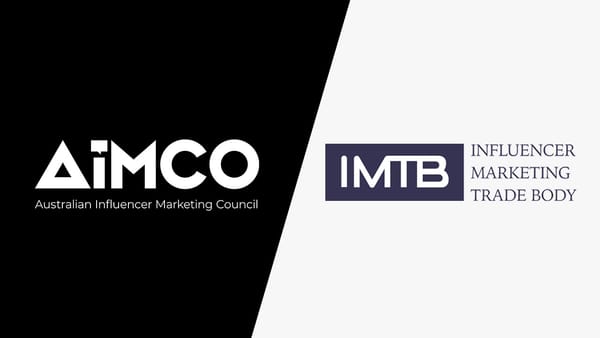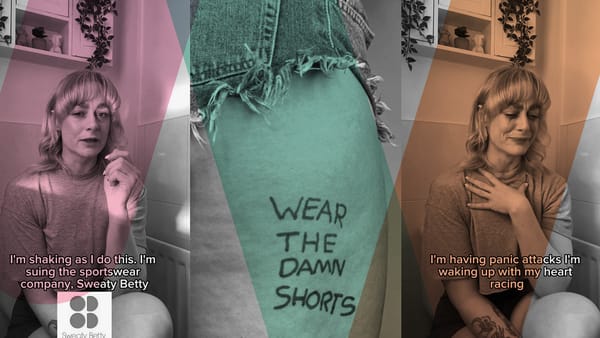Will Increased Influencer Marketing Transparency, Authenticity & Compliance Kill Or Cure the Discipline?
Set to be one of the show’s most anticipated sessions, we speak to the panel’s moderator Scott Guthrie, strategic advisor at CampaignDeus to find out why attendees shouldn’t miss out on this important session and the current scope around transparency, authenticity and compliance within influencer marketing.Hi Scott, thanks for taking the time to chat with Talking Influence. What are you most looking forward to at the Influencer Marketing Show this year?
Scott Guthrie: Thanks for having me! There’s a stellar line up of speakers and on-topic themes being explored this year. I’m looking forward to ensuring I’m fully up-to-speed with the most current thinking surrounding influencer marketing. Delivering best practice for brands is so important as we progress our nascent industry.I’m looking forward to meeting many of the brands attending, too. And, of course, I’m looking forward to meeting many colleagues within the industry who I now count as friends but have never met! We have exchanged ideas via email, Twitter chats and LinkedIn comments but never met in real life.Speaking of the event, you will be moderating the panel discussion Will Increased Influencer Marketing Transparency, Authenticity & Compliance Kill Or Cure the Discipline? on Day 2. Why should attendees get involved in this very topical session?
SG: Transparency through effective disclosure is the legal thing to do. It’s the right thing to do from an ethical standpoint, too. It’s also good for business. As consumers, we hate to feel ‘hoodwinked’ into believing paid-for content is actually organic content. So, we switch off from content we believe has been paid for but is masquerading as editorial. This damages the credibility of both brand and influencer and fails to drive an impact through an influencer marketing campaign.I was thrilled to be asked to chair this panel discussion. Aiden Carroll from the Coloring in Department, Mark Dandy from ISAWITFIRST and Wura Sanusi from the Advertising Standards Authority are all fantastic speakers. They’re all knowledgeable and passionate about this area.Transparency and compliance have been a huge talking point within influence marketing in 2018. Just how vital is it for advertisers and affiliates to keep on the right side of the law when it comes to partnering with influencers?
SG: Making clear that ads are ads is vital. But compliance is more than the staying on the right side of the law. The role of the influencer marketer is to ensure that the influencer marketing campaign is on-point in terms of right-fit between influencer and brand. Does the proposed influencer share the same tone-of-voice as your brand? Does he or she share the same values as the brand and the firm at large?Several brands work with teenagers on their influencer marketing efforts. The pay is lower than with adults. There are often no contracts signed. Money earned from posting these ads is often transferred directly into the teenager’s Paypal account to shield it from their parents’ eyes. There are opposing views on this. Some will argue that this is exploitative work. The counter-argument is that it gives teenagers another avenue to generate pocket money. It teaches them about business, too. It depends on how these campaigns are executed. And, whether the enacted values are in line with those declared by the companies. In other words, do the brand’s actions comply with the values they say they believe in?There have been several cases of influencers being fined for not disclosing an ad when promoting products on social media. Ultimately, should influencers be doing more to ensure that they follow the advertising rules or should this be an equal effort between influencer and advertiser?
SG: Love Island star Olivia Buckland fell foul of the Advertising Standards Authority earlier this month. Louise Thompson from Chanel Four’s Made in Chelsea has had two separate paid-for Instagram posts banned by the watchdog in as many months.Regulators are really taking this area seriously now. They appear to be upholding complaints against highly visible influencers, too. Though with these two influencers I don’t think they were fined – rather their ads were banned.Influencer marketers, influencers and any media agency working between the two are all jointly responsible for ensuring that promotional activity is compliant with the CAP Code. It’s obviously in an influencer’s best interest to make every effort to be fully compliant with advertising regulations. Being upheld by the governing body tarnishes their reputation just as much as – if not more than – that of the brands they are promoting.With the industry being the size it is, does really matter if we forget #ad #freebie #spon? What’s the worse that can happen?
SG: Ads must be obviously identifiable as such. Influencer marketers need to make it obvious – any label (or other means) used to highlight the ad needs to be upfront (before people click/engage), prominent (so people notice it), appropriate for the channel (what can you see and when?) and suitable for all potential devices (it needs to be clear on mobile too!). Watchdogs seem to be just banning ads at the moment, but they do have powers to fine brands who fail to effectively mark their ads.Beyond financial penalties, a failure to effectively disclose ads brings reputational harm to brands and influencers alike. Consumers are less likely to buy from brands or influencers they don’t feel they can trust. And, after all, trust is the bedrock upon which all of influencer marketing is built.The Advertising Standards Agency has just launched a new compliance guide for influencers to ensure they stick to the rules by making clear when their posts are ads. Do you think this a step in the right direction to improving transparency within influencer marketing?
SG: The new online resource aims to help all parties involved in influencer marketing follow the rules. It’s been really well put together. It uses accessible language, and includes a helpful flowchart which helps communicators answer the question: is my post an ad and do I need to label it? Yes, it is a big step in the right direction for driving awareness of regulations and providing knowledge about how to stay on the right side of the law. The guide includes sections on:- What the rules are
- What the Advertising Standards Authority considers to be an ad
- How to make clear ads are ads
- What the CMA’s requirements are
- What happens if someone makes a complaint about a post to the ASA
It’s great to see the likes of Unilever, Twitter and Facebook cracking down on fake followers to ensure better transparency. However, as technology continues to advance with the introduction of image manipulation, CGI influencers and more, will this ultimately stifle transparency and also innovation within the influencer channel?
SG: This year, higher demand for social influencers’ creativity has translated into higher tariffs for their services, especially in popular verticals such as fashion and style.With increased influencer marketing spend comes a greater need to demonstrate return on investment (ROI). Accurate data and robust, independent campaign performance evaluation, along with industry benchmarking, have become a fundamental part of the influencer marketing campaign planning process.In a nutshell, fake followers don’t buy stuff. Fake engagement doesn’t’ move the needle in terms of changing behaviours or forming opinions. So, influencers using these techniques will fail to produce meaningful ROI beyond vanity metrics.Influencer audiences increasingly demand higher-quality sponsored content from the creators they follow, too.Fail to deliver either and the business model collapses for both brand and influencer. This is good news for the industry. Good influencers will continue to earn good money from long-term brand tie-ins. Sub-par ‘influencers’ will find themselves looking elsewhere to earn a living.Lastly, how do you see ASA guidelines evolving in the future?
SG: Yes, the ASA guidelines will evolve. But, the ASA can only act when someone complains about an ad. They are led by precedent, meaning the watchdog will always play a reactive rather than a proactive role in regulating this area. Each time the ASA investigates an influencer ad, it creates a precedent that CAP draws upon to create a variety of guidance documents for the industry.







